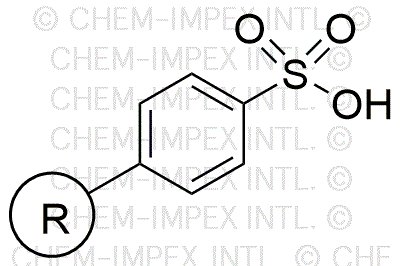Sulfonic acid resin is widely utilized in research focused on:
- Ion Exchange Processes: This resin is effective in water treatment applications, where it helps remove unwanted ions, making it ideal for industries like pharmaceuticals and food processing.
- Catalysis: In organic synthesis, sulfonic acid resin serves as a solid acid catalyst, enhancing reaction rates and selectivity, particularly in the production of fine chemicals and agrochemicals.
- Separation Techniques: It is employed in chromatography for separating compounds, which is crucial in analytical labs for purifying substances and determining their concentrations.
- Environmental Remediation: The resin can be used to capture heavy metals from wastewater, providing an eco-friendly solution for industries aiming to reduce their environmental footprint.
- Polymer Production: In the manufacturing of specialty polymers, sulfonic acid resin acts as a functional additive, improving properties like conductivity and thermal stability, beneficial for electronics and automotive sectors.
General Information
Properties
Safety and Regulations
Applications
Sulfonic acid resin is widely utilized in research focused on:
- Ion Exchange Processes: This resin is effective in water treatment applications, where it helps remove unwanted ions, making it ideal for industries like pharmaceuticals and food processing.
- Catalysis: In organic synthesis, sulfonic acid resin serves as a solid acid catalyst, enhancing reaction rates and selectivity, particularly in the production of fine chemicals and agrochemicals.
- Separation Techniques: It is employed in chromatography for separating compounds, which is crucial in analytical labs for purifying substances and determining their concentrations.
- Environmental Remediation: The resin can be used to capture heavy metals from wastewater, providing an eco-friendly solution for industries aiming to reduce their environmental footprint.
- Polymer Production: In the manufacturing of specialty polymers, sulfonic acid resin acts as a functional additive, improving properties like conductivity and thermal stability, beneficial for electronics and automotive sectors.
Documents
Safety Data Sheets (SDS)
The SDS provides comprehensive safety information on handling, storage, and disposal of the product.
Product Specification (PS)
The PS provides a comprehensive breakdown of the product’s properties, including chemical composition, physical state, purity, and storage requirements. It also details acceptable quality ranges and the product's intended applications.
Certificates of Analysis (COA)
Search for Certificates of Analysis (COA) by entering the products Lot Number. Lot and Batch Numbers can be found on a product’s label following the words ‘Lot’ or ‘Batch’.
*Catalog Number
*Lot Number
Certificates Of Origin (COO)
This COO confirms the country where the product was manufactured, and also details the materials and components used in it and whether it is derived from natural, synthetic, or other specific sources. This certificate may be required for customs, trade, and regulatory compliance.
*Catalog Number
*Lot Number
Safety Data Sheets (SDS)
The SDS provides comprehensive safety information on handling, storage, and disposal of the product.
DownloadProduct Specification (PS)
The PS provides a comprehensive breakdown of the product’s properties, including chemical composition, physical state, purity, and storage requirements. It also details acceptable quality ranges and the product's intended applications.
DownloadCertificates of Analysis (COA)
Search for Certificates of Analysis (COA) by entering the products Lot Number. Lot and Batch Numbers can be found on a product’s label following the words ‘Lot’ or ‘Batch’.
*Catalog Number
*Lot Number
Certificates Of Origin (COO)
This COO confirms the country where the product was manufactured, and also details the materials and components used in it and whether it is derived from natural, synthetic, or other specific sources. This certificate may be required for customs, trade, and regulatory compliance.


